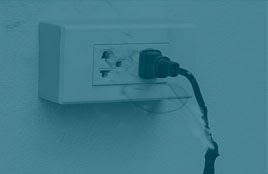What is a medical malpractice lawsuit? What does it take to file one? What does it take to win? These are the kinds of questions many clients ask us, and they are important to address before embarking on this aspect of civil litigation.
To understand how to file and win a malpractice lawsuit, it is important to understand its three, primary elements: negligence, causation and damage. In medical malpractice, like all negligence cases, it is necessary for the person that is bringing the lawsuit, the plaintiff, to prove these three components to be victorious. Those that are accused of negligence, the defendants, have no requirements to prove anything.
Proving Negligence
The first component, negligence, is the failure of a person to act reasonably under the circumstances. Did they do, or not do, something that a similarly situated, reasonable person (healthcare provider) would have done with similar experience, education and training?
To prove medical negligence, the plaintiff must retain another qualified healthcare provider, such as a physician or nurse, to testify as an expert against the physician or nurse they allege injured them. To be qualified, an expert must practice in the same or similar field of medicine, such as a cardiologist testifying against another cardiologist. That expert must state—with a reasonable degree of medical certainty—that their colleague failed to act appropriately or reasonably under the circumstances.
Identifying Causation
The second component of a medical negligence case is causation—did the negligent conduct of the defendant cause the injury suffered by the plaintiff? Even if a doctor admits to negligent conduct, if his conduct did not cause some form of injury, the plaintiff will not be victorious in a malpractice lawsuit.
As an example, let us assume a doctor failed to timely diagnose a slow growing, non-aggressive, cancer by several months. Now, it is known by physicians that certain cancers are aggressive and others are not. In this example, let’s say a several month delay neither changed how the cancer was treated nor changed the survivability of the patient. As a result, the error by the first doctor, while negligent, didn’t make any difference that the disease was not diagnosed earlier. Nothing changed, therefore there is no causation.
An expert must also testify to causation with the same degree of medical certainty as negligence.
Recovering Damages
Finally, and of equal importance, is the issue of “damage”—the injury or injuries themselves.
To recover damages, it is first necessary that the plaintiff prove both negligence and causation. Without both of those components, the case will fail. Damages, however, can be any injury, of any type, where a person lost something of some value. That loss could be property, health, wages—essentially anything of value that has been lost as a result of the negligence and causation.
The amount of damages is not important. Of course, without damages, the case would fail because there is no harm from the negligent conduct. To use the old adage: “no harm, no foul”. But damages are a critical component, one which all plaintiffs seek to meet.
*****
These are the essential elements in presenting a strong case. But we’re not done yet. In fact, we still haven’t gotten to the courthouse. To learn more about the process of filing a case, look for my second installment next week on determining merit.






